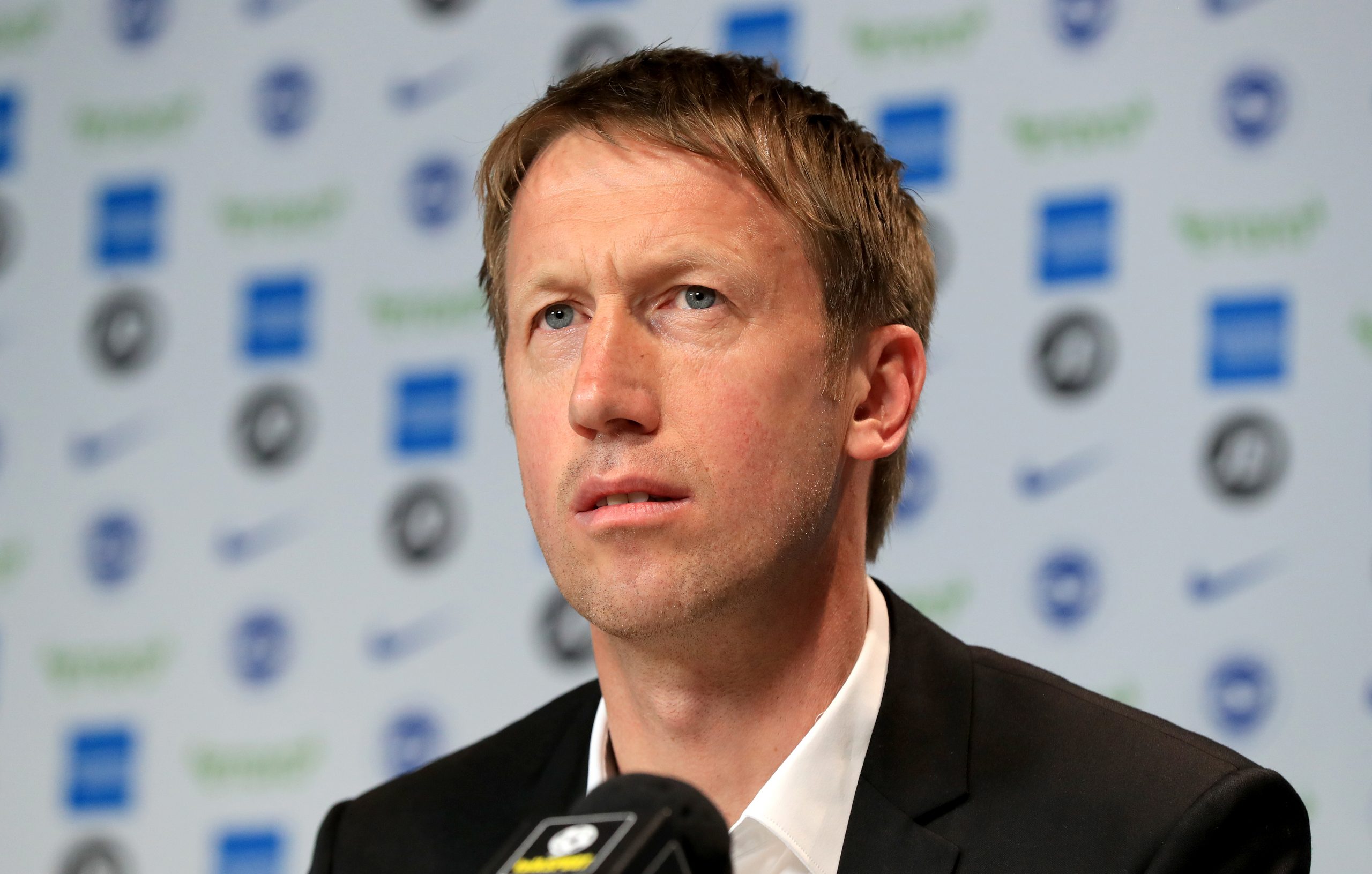Can a different style of football get more out of these players?
On the 17th April 2017, Brighton and Hove Albion were promoted to the Premier League.
The club knew that the side needed strengthening, and set about to make some interesting moves. Pascal Gross, Mat Ryan, Davy Pröpper and José Izquierdo came in amongst others and had a big impact, Gross especially. The team struck the right blend between manager Chris Hughton’s compact style with two banks of four and a sprinkling of quality in the final third. Brighton finished a hard fought 15th, hitting the magic 40 point number exactly.
Like any club heading into a second Premier League season, they wanted to further cement their place in the top flight, and so money was spent. First choice striker Glenn Murray was 34 years old, so Florin Andone and Jürgen Locadia were brought in to challenge him upfront. Right back Bruno was 37(!), so Bernardo arrived as his heir apparent. The team was heavily reliant on Gross for creativity, so Alireza Jahanbakhsh and Yves Bissouma arrived. Jahanbakhsh would also offer a goal threat from out wide, while Bissouma would improve the team’s ball progression from deeper areas while displacing the uninspiring Dale Stephens. It all seemed like it was well thought out, with clear long term thinking. Brighton could push on and perhaps may not even have to worry about relegation if these players hit the ground running.
Cut to twelve months later. Murray has turned 35 and played more football than Andone and Locadia put together. Bruno still put in 1200 minutes. Record signing Jahanbakhsh managed 12 starts all year, no goals or assists. Bissouma has done ok, but still played less than Stephens or Propper in midfield. The team finished four points worse off than the previous year, barely scraping survival. Hughton was sacked straight after the season ended. What happened?
Well, in a sense, nothing happened. In Brighton’s first Premier League season, they were a side with generally poor numbers save for a brief spell in the second half of the season where they looked solid. In 2018/19, largely the same thing happened again. The numbers were a shade worse, putting up an expected goal difference per game of -0.45 rather than -0.40, but nothing so dramatic as to suggest anything had seriously changed.
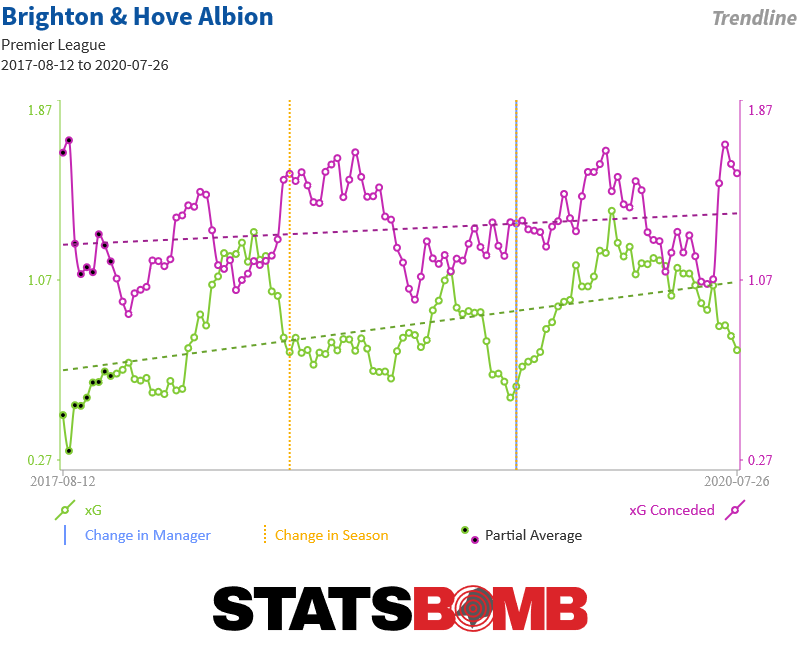
The biggest story seemed to be that Hughton had a clear idea of how he wanted to do things while the recruitment team had another. For Hughton, the number one priority seemed to be keeping a good defensive shape, and so that meant players who understood what he wanted and would follow the instructions, sticking with the guys he trusted. The recruitment team seemed to take the view that the club should be moving to a more expansive style to progress in the top flight, winning the ball higher up the pitch and playing some more aesthetically pleasing stuff. When you’re the manager, you get to win the battle. And so, in the way Hughton drew it up, Brighton were not an aggressive side in trying to win the ball back. Their passes per defensive action, the number of passes you allow the opposition to make before an attempt to regain possession, was the second largest of any team in the league. They were happy to sit back, get into a good shape, and soak up pressure.
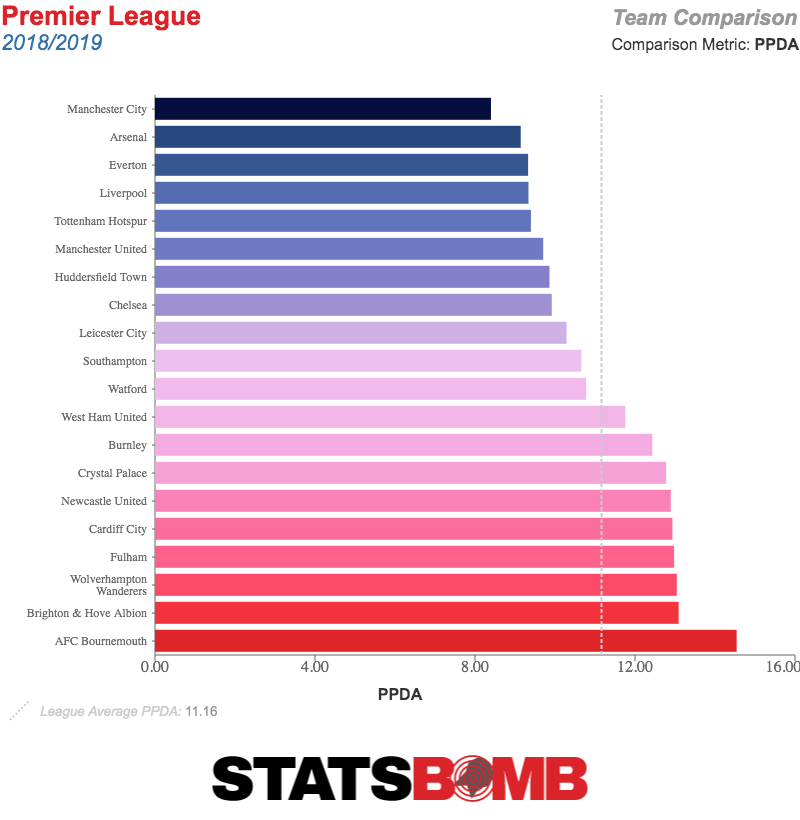
When they had the ball, it was also a fairly traditional English style of play. Brighton relied on crosses to get the ball into the box more than any other side bar Huddersfield.
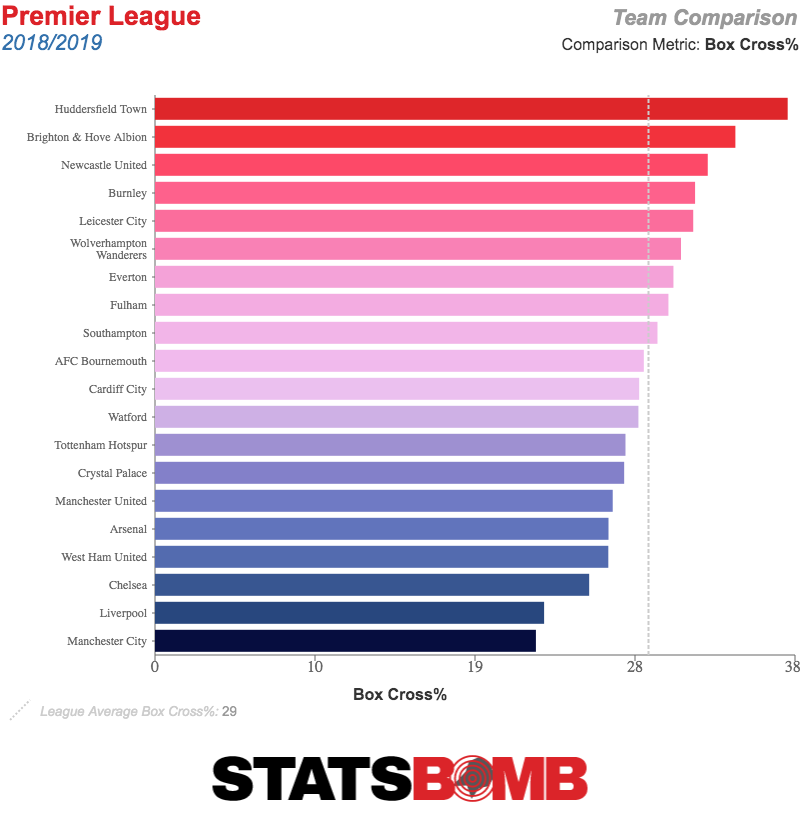
Whether this was the right or wrong approach by Hughton is up for debate. Perhaps Brighton would have been extremely porous without the centre backs receiving such a level of protection. Perhaps the players brought in last summer simply weren’t good enough. What can’t be argued, though, is that there was far too much disconnect between Hughton and the recruitment people. Thus it was imperative that chairman Tony Bloom and new technical director Dan Ashworth get everyone on the same page. It seems as though they took the view that Hughton was the problem rather than the players, and the former Republic of Ireland international was dismissed in favour of someone who could bring a more progressive style of football.
Enter Graham Potter.
Just about the only thing Hughton and Potter have in common as managers is their country of birth. The headlines around Potter are usually about some fairly outside the box approaches to man management, but the stuff he gets his teams to do on the pitch is usually interesting as well. Looking at his Swansea team of last season shows some interesting ideas. On one hand, they had the fourth highest average possession, at 57%. And yet they had the third highest passes per defensive action in the division. Swansea were extremely comfortable at retaining the ball when they had it, but were very relaxed about trying to win it back when they didn’t. In the modern game, possession football and high pressing tend to go hand in hand, but not with Potter.
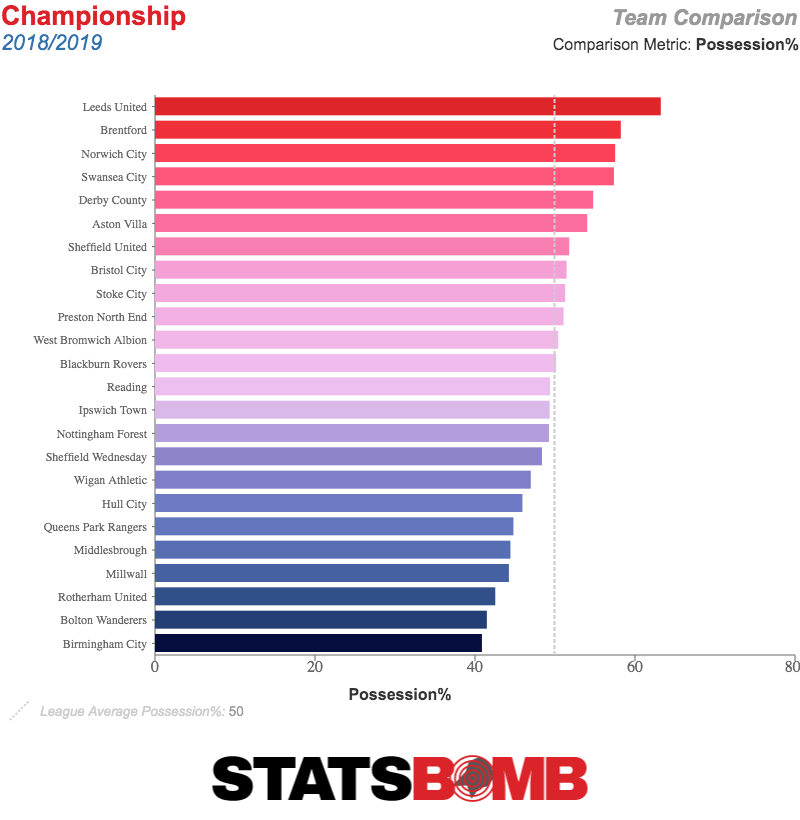
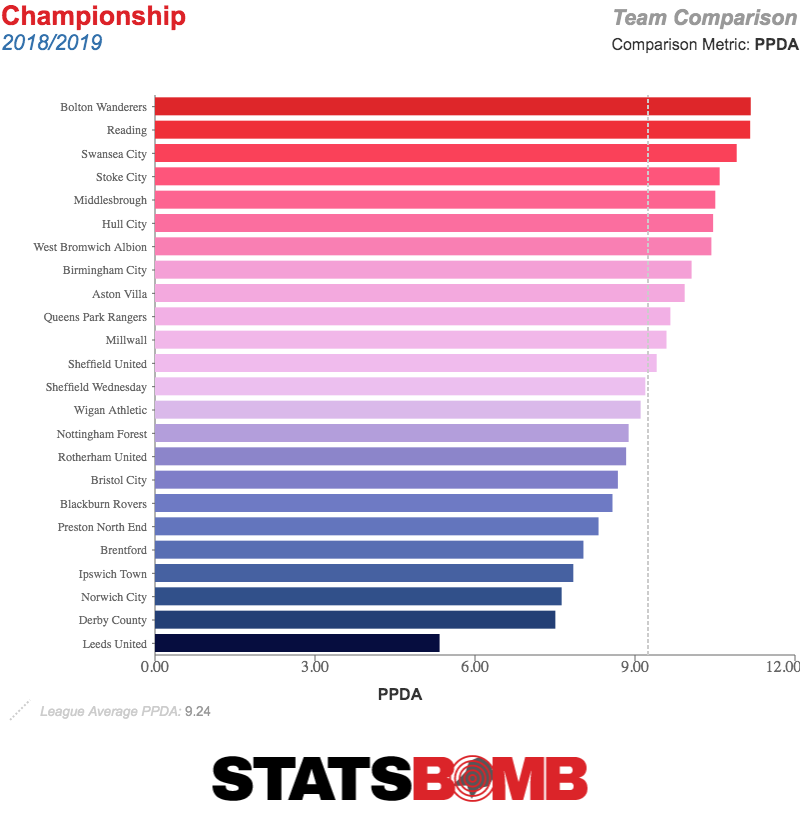
Looking at their defensive activity map, this is the least active side I can remember seeing. And I don’t think that’s necessarily a flaw. Potter has his players press relatively hard in both penalty areas, and almost nowhere else.
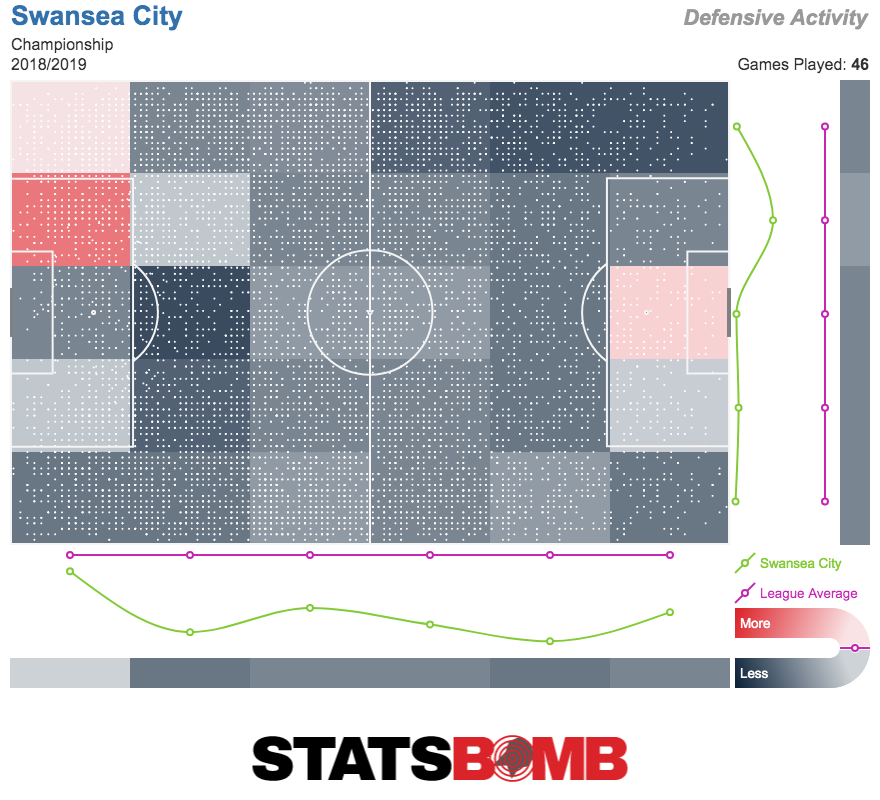
And any highlight reel shows you that they were capable of playing some pretty slick stuff out from the back when they had it. This approach isn’t too different to what Potter did at Östersunds, a team similar to Brighton in that they have a significant resource disadvantage to the bigger sides in the Allsvenskan, so it’s hard to imagine he won’t go for this style at the Amex.
Swansea were a better side than you probably think last season, with an xG difference per game of +0.25, the fifth best in the division. It’s not that hard to imagine an alternate reality where everything goes their way and they luck into a promotion. There was nothing to suggest Potter wasn’t the manager people thought he was after the miracles he was involved with at Östersunds.
There are reasons why it might be harder to translate his philosophy to the South coast of England than it was to South Wales. Though it had waned in recent years, possession football was at the core of Swansea’s identity dating back to their time moving up the divisions with Roberto Martínez and Brendan Rodgers. At Brighton, he’ll be implementing them largely from scratch. Many of the Premier League era signings are comfortable in a different style of football, yes, but arguably more of a pressing game. The core of Hughton’s first choice eleven are largely untested at this kind of football. As such, signings are key.
First up is Adam Webster at centre back, arriving from Bristol City for £20 million. Potter likes to switch between two and three centre back systems, and incumbents Lewis Dunk and Shane Duffy have strong qualities but are not renowned for their work with the ball at their feet, so it made sense to add another option here. By comparison, Webster has some rather extreme ideas about how to play football. Let’s take a look at some passing sonars. Here are Dunk and Duffy’s (Dunk is on the left, Duffy on the right).
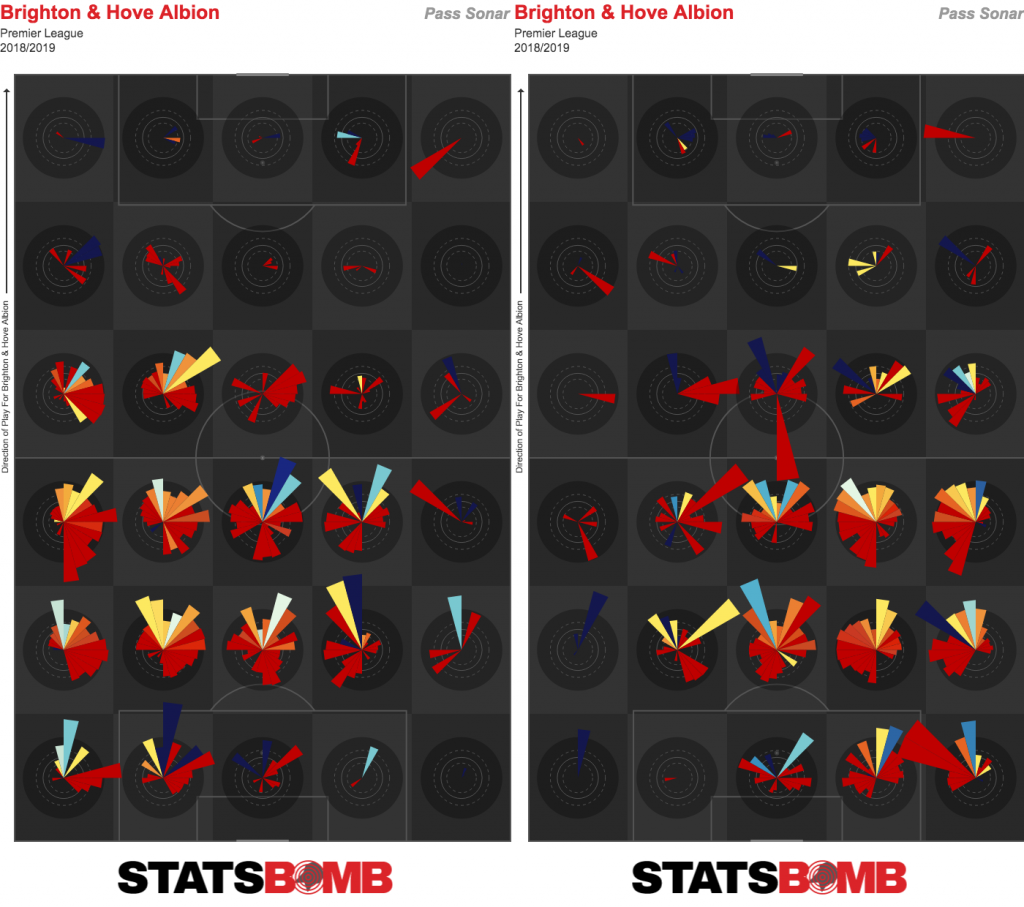
Fairly standard stuff we’d expect from a traditional style centre back pairing. Both are more active on their own sides and neither is really getting involved higher up the pitch. Now here’s Webster’s from last season, admittedly a division down.
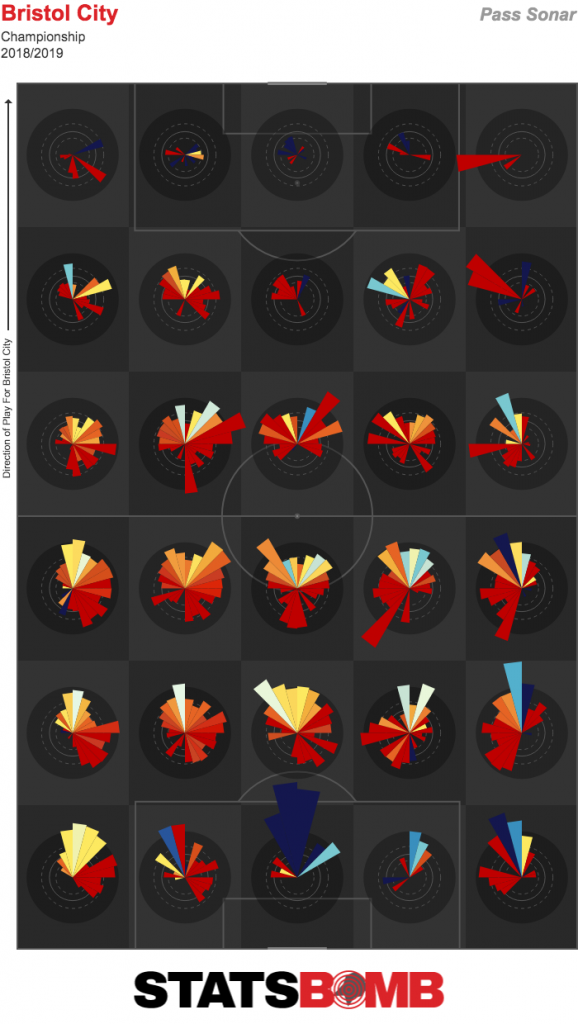
If you didn’t know, it would not be at all obvious that this is the sonar of a centre back. The guy has no fear in pushing up the pitch and getting involved in attacking play. And he doesn’t seem to be much of a calming influence at the back, either. All of his passing seems to be high risk, focused on starting attacks. There’s a fun Twitter video of Webster dribbling up the pitch with total belief in his own ability, uninterested in keeping it tight and safe. His passing accuracy of just 76% is a testament more than anything else to how much he takes risks. He’s going to change the way Brighton play. Whether he’s a good enough defender at Premier League level is something we’re going to find out.
Elsewhere, Leandro Trossard is another of the raft of players coming over to England from the Belgian top flight. He’s a dribbly winger who adds goals and assists and will hope to offer what Jahanbakhsh failed to deliver on last season, but it’s difficult to predict how someone will adjust to the Premier League straight from Belgium.
Neal Maupay felt like one of the most obvious Championship players ready to move up to the Premier League. Along with his goal threat, Maupay offers speed in behind and a good ability to press from the front, though who knows if Potter will use that tool. His numbers look good, though not dramatically better than Andone in La Liga, and that was obviously a harder league than the Championship. But he does seem to offer more all round play, and it should help fade Murray out of the side, regardless.
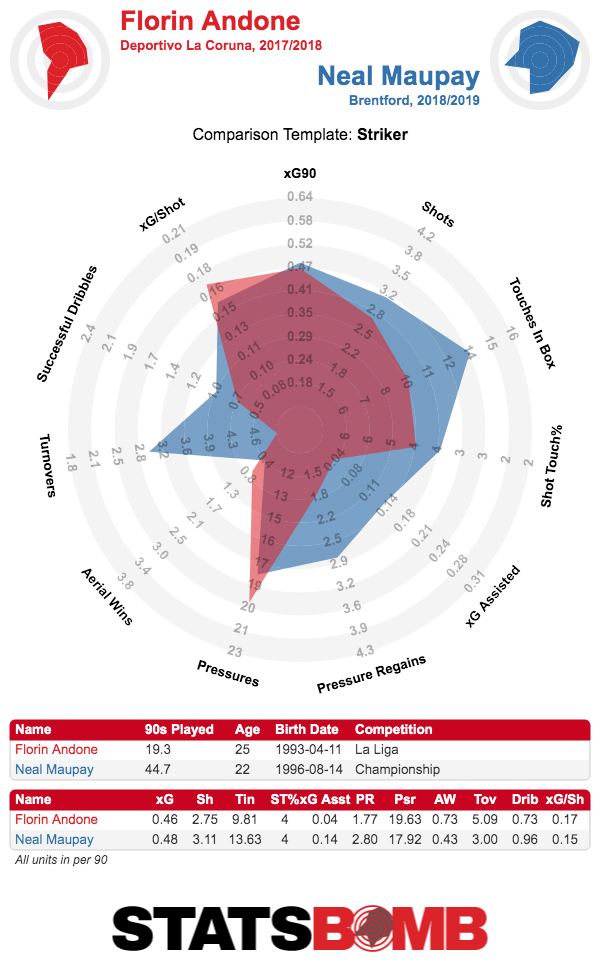
There were times when Aaron Mooy felt like the only person trying to actually play some football in those Huddersfield teams. As such, it’s hard to read too much into his performances in the last two seasons, but if this move comes off, Brighton should get a decent creative passer in midfield who also puts a shift in creatively. As a loan, it’s hard to criticise the move too much.
The shift in approach for Brighton’s business this summer compared to last is dramatic. Trossard is the only player to arrive from a club outside of England, whereas all but one of the club’s first team outfield signings last time came from other shores. One can’t ignore the influence of Ashworth here, arriving from his role as The FA’s director of elite development. If it were up to me, I would have probably looked more towards Spain, Italy, France and Germany, but none of these signings feel totally without logic, and it does seem like there’s a much clearer understanding between those bought and what the manager wants to do with the squad.
I have no personal ties to Brighton, the club or the city, but I find myself really wanting this to work. Potter might be the most interesting English manager to emerge in a long time, and the league as a whole would benefit from him successfully coaching his style of play here. As much as we didn’t see it last season, I do think the players signed in past windows are capable of producing much more, and that it’s time to move away from some of Hughton’s trusted lieutenants. The signings are solid, but it’s not a drastic overhaul, so it really feels like the season will live or die on Potter’s ability to get more out of those on the fringes of the squad last season. It might fail. They might get horribly exposed and finish the season in 20th. But I feel positive about this. Brighton could surprise and do better than most expect this year.
Header image courtesy of the Press Association
